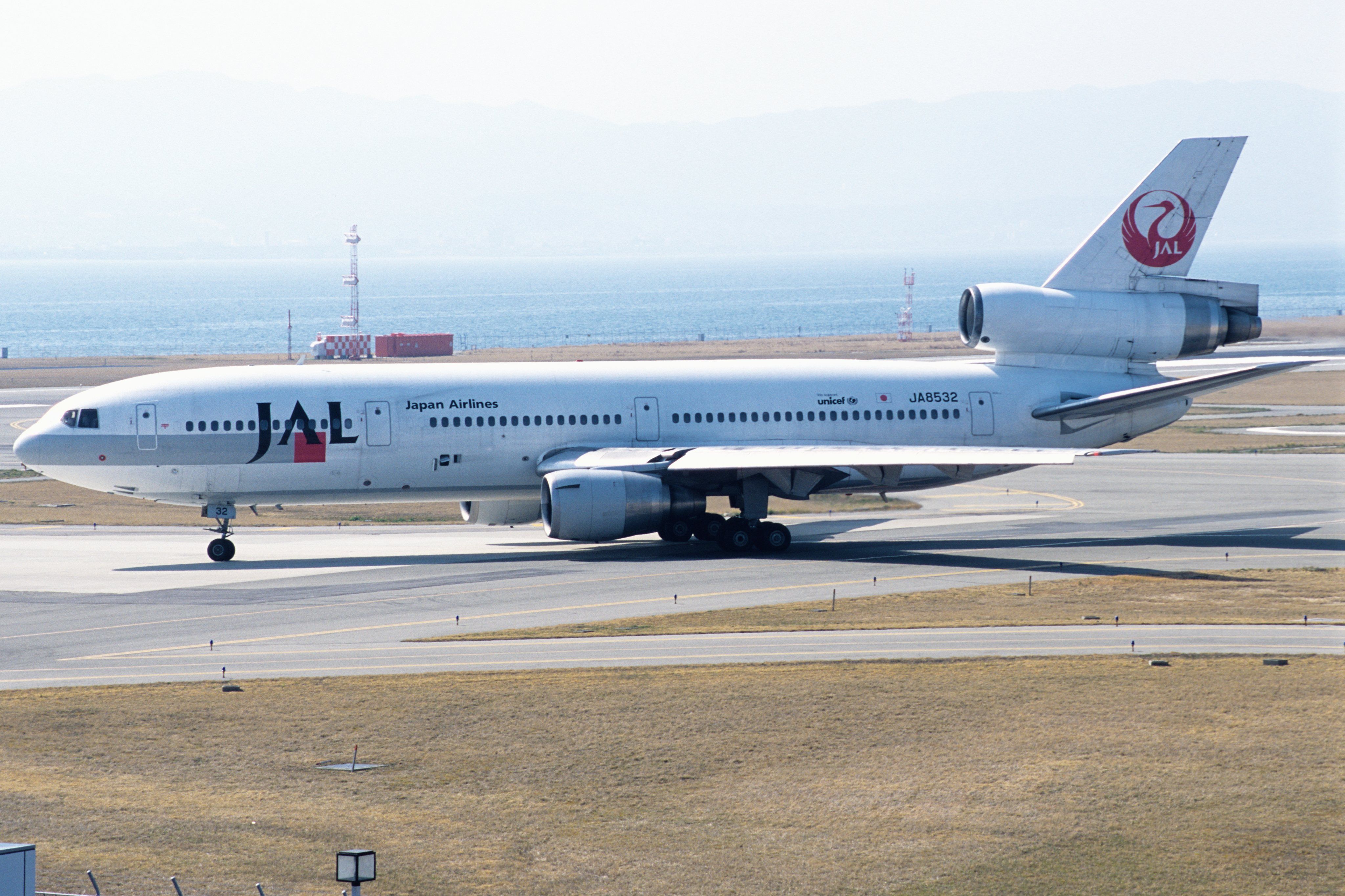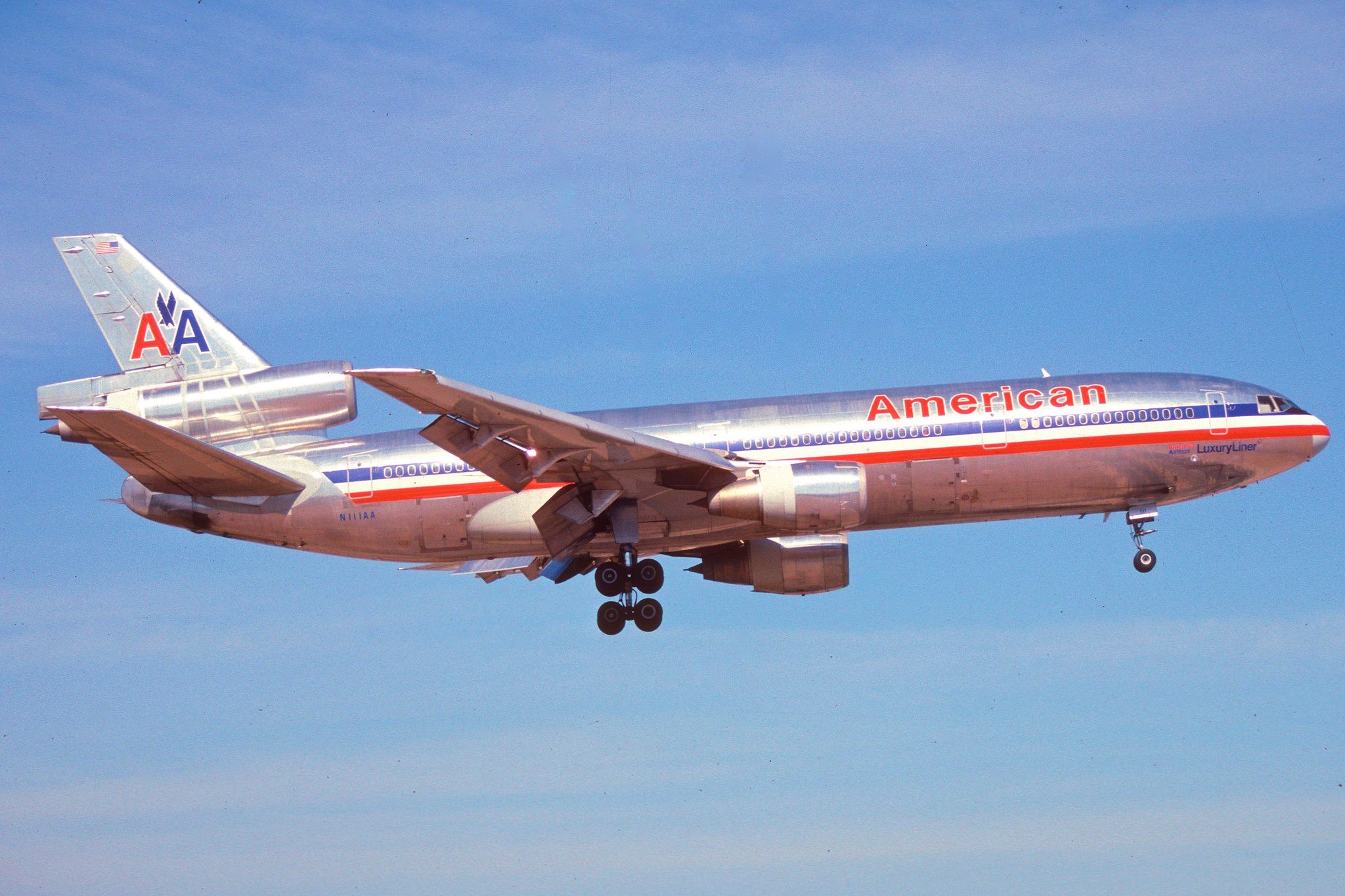This month marks years since the McDonnell Douglas DC-10's first-ever flight on August 29th, 1970. Almost 400 examples of the three-engine widebody, which served as a predecessor to the McDonnell Douglas MD-11, were built over a 20-year production cycle. Its three variants had several small but important differences.
The original DC-10-10
When the DC-10 entered service with American Airlines just under a year after its maiden flight, the first variant to do so was the DC-10-10. Powered by General Electric CF-6 turbofan engines, a reported 122 examples of this version of the twin-aisle trijet were produced. It was the longest variant, at 55.55 meters.
Meanwhile, the DC-10-10 was 17.53 meters tall, and had wings that were 47.35 meters wide and 330 square meters in area. Its range, based on a typical 270-seat layout and a Mach 0.82 (473 knots / 876 km/h) cruise, was 3,500 NM (6,500 km). As well as the standard DC-10-10, this version also had two more sub-variants.
One was known as the DC-10-10CF, and differed from the original in the sense that it could be converted between passenger and cargo-carrying configurations. McDonnell Douglas produced eight of these, along with seven DC-10-15s.
These aircraft were fitted with more powerful engines for 'hot and high' usage.
Get the latest aviation news straight to your inbox: Sign up for our newsletters today.
Going long with the DC-10-30
Just over a year after the original McDonell Douglas DC-10-10 entered service with American Airlines, December 1972 saw the DC-10-30 variant begin commercial operations with Swissair. This variant's key advantage over its standard counterpart was a much longer range (almost 50% more) of 5,200 NM (9,600 km).
This was enabled through the installation of larger fuel tanks, as well as increased fuel efficiency thanks to a larger wingspan (50.38 meters wide, 338.8 square meters in area). Compared to the DC-10-10, this resulted in an increased maximum takeoff weight (MTOW) of 251,744 kg (compared to just 195,045 kg). To support this, McDonnell Douglas also installed an additional set of central landing gear.
The DC-10-30 ultimately became the family's most popular variant. Indeed, it sold 163 examples in total, with many going to European long-haul operators. McDonnell Douglas also produced 27 convertible DC-10-30CF aircraft, along with six extended range DC-10-30ERs (plus five conversions).
Here, an increased fuel capacity and MTOW resulted in a range of 5,730 NM (10,620 km).
Love aviation history? Discover more of our stories here.
The re-engined DC-10-40
The third and final main variant of the McDonnell Douglas DC-10 family was the DC-10-40, which differed from its classmates through its use of Pratt & Whitney JT9D turbofan engines. Northwest Orient Airlines was reportedly a key driver in this move, as it wanted its DC-10s to have the same engines as its Boeing 747s.
The DC-10-40 was also a long-range aircraft, and thus had similar dimensions to the DC-10-30. However, one notable exception was its length, which clocked in at 55.54 meters (compared to 55.35 meters for the DC-10-30). Its range was slightly lower, measuring 5,100 NM (9,400 km). Overall, 42 examples of this variant were built.
Across the industry
The DC-10 was also modified into the KC-10 Extender. Based on the 10-30, this tanker aircraft was well deployed by the United States Air Force (USAF). This aircraft provided significant payloads over long ranges while also acting as an aerial refueling unit. A total of 60 KC-10s were produced between 1979 and 1987, supporting 386 DC-10s.
Sadly, the DC-10 is often remembered for the several accidents involving the type over the decades. The 1974 crash of Turkish Airlines flight 981 is an example of this. This event was the deadliest single-plane incident at the time, resulting in 346 deaths. Still, the DC-10 was a workhose for numerous airlines as the jet age propelled the aviation market into new heights in the latter half of the 20th century.
Which is your favorite DC-10 variant? What do you make of the overall history of the aircraft? Let us know what you think of the plane and its operations in the comment section.



